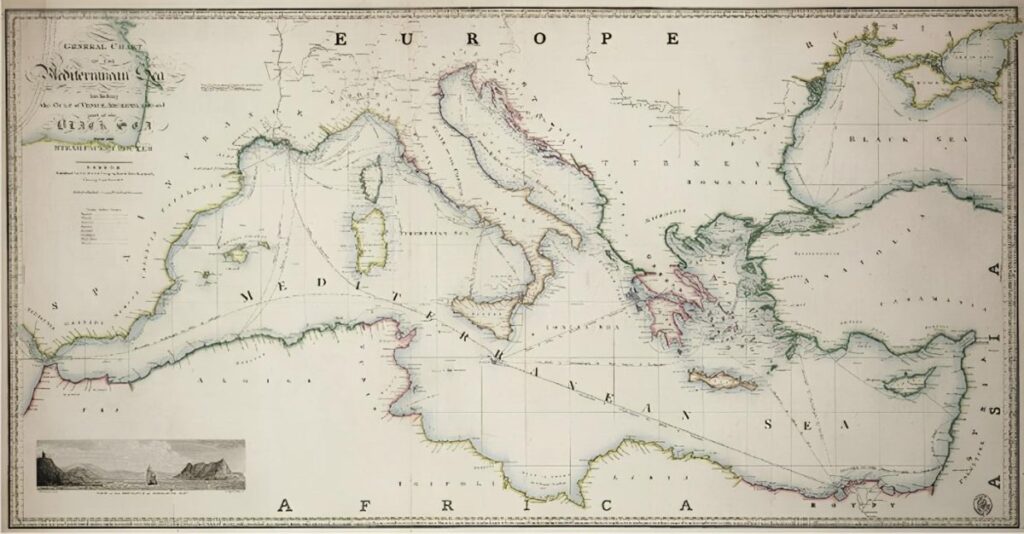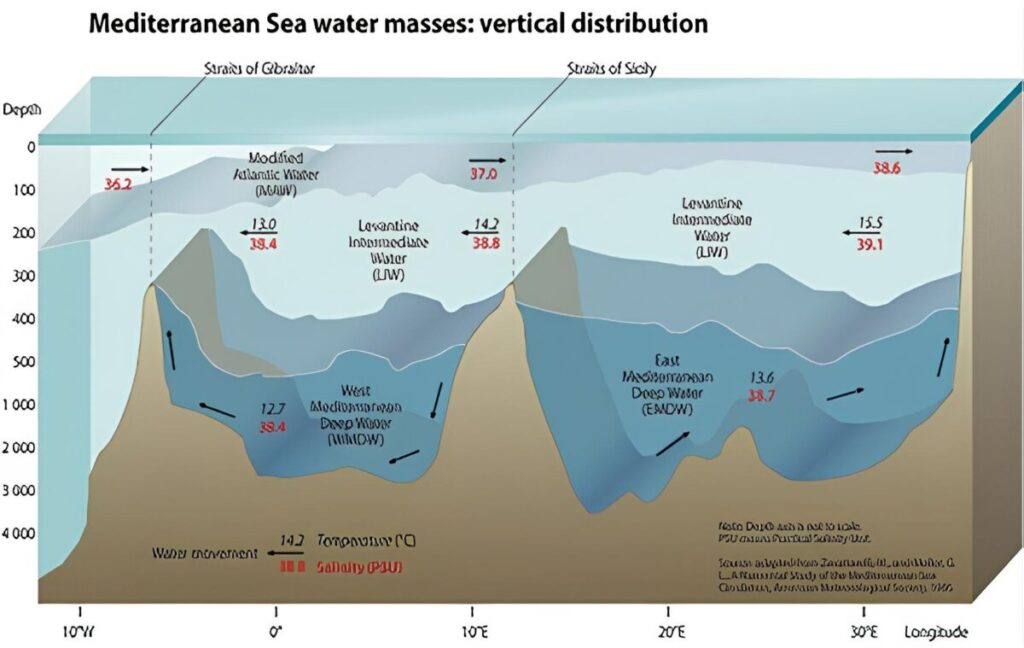The design of the Mediterranean has radically evolved over the last 160 years, shifting from a simple navigable surface to a three-dimensional volume. This paradigm shift is essential for addressing current environmental, strategic, and economic challenges.
By Lino Camprubí
DEEPMED, a project funded by the European Research Council (ERC), explores the history of deep Mediterranean exploration and its impact on science and politics. Its main hypothesis is that science and military strategy have transformed the depths of the Mediterranean into an object of analysis and political action, thus altering the perception of the region. DEEPMED has three objectives: to identify the actors and contexts that contributed to the construction of knowledge about the deep Mediterranean, to analyze the interaction between natural and human times in the deep Mediterranean, and to explore the role of the deep Mediterranean in global science and geopolitics.
From Surface to Volume: The Hidden History of the Mediterranean
Historically, the Mediterranean has been studied as a surface of connectivity, with a focus on trade and human interaction. Fernand Braudel is an example of this, and his vision remains predominant in the humanities and in public opinion (for example, in the permanent exhibition at MUCEM Connectivities). This is the top-down view of conventional maps.

However, the exploration of the seabed from the 19th century revealed an unknown dimension. From the repair of telegraph cables in 1860 to the mapping of deep currents, through the use of submarines during World War I and current concerns related to climate change, the deep Mediterranean has gradually been integrated into scientific and strategic knowledge. This is why volumetric representations of this maritime space are becoming increasingly common (graph at the end of the article).
The Importance of Depth in Mediterranean History
The Mediterranean has often been viewed as a marginal space in modern times, overshadowed by transatlantic trade. However, DEEPMED challenges this view by demonstrating how the exploration of the depths has influenced areas such as military security, oceanographic science, and resource exploitation.
The idea of a "surface" Mediterranean has led to biased interpretations of its importance in contemporary history. The current migration crisis and maritime borders reinforce its role as a barrier, but DEEPMED proposes to understand it as a volume, where the interaction between humans, technology, and nature redefines its geopolitical significance.
The Role of Technology in Deep Exploration
Ocean sciences have evolved from a navigation-centered approach to integrating depth as a key variable. Tools such as submarines, sonar, and sensors have allowed for the mapping of the deep Mediterranean and a better understanding of phenomena like underwater currents and biodiversity.
Through its historical and technological approach, DEEPMED highlights the fundamental role of scientific instruments in transforming knowledge and management of the sea. Its analysis shows that the deep Mediterranean is not just an object of study, but a constantly evolving strategic space.
An Interdisciplinary and Global Approach
The project adopts an interdisciplinary approach combining history, geography, science, and politics. It uses digital tools such as Historical Geographic Information Systems (HGIS) to map the evolution of the deep Mediterranean and visualize its transformations over time.
DEEPMED also aims to contribute to the debate on climate change by exploring how environmental variability and human activities have altered this ecosystem. The Mediterranean, considered a "miniature ocean," has become a key laboratory for understanding the impact of the Anthropocene on the world's seas.
A New Perspective on the Mediterranean
DEEPMED proposes a new approach to Mediterranean history, where depth is an essential element for understanding its past and future. By integrating volume into the analysis, the project provides a more comprehensive view of the Mediterranean, highlighting its scientific, strategic, and environmental importance.
The study of the deep Mediterranean not only transforms our understanding of its history but also opens new perspectives for its management and conservation in the 21st century.

Numerical Study of the Mediterranean Sea Circulation, American Meteorological Society.
Lino Camprubi is a full professor at the University of Seville and the principal investigator of the ERC-CoG DEEPMED. A historian of science and technology, he is interested in the interactions between science and politics, as well as the relationships between the history and philosophy of science. A member of the Young Academy of Europe and the Young Academy of Spain, he received the ICOHTEC (International Committee for the History of Technology) Best Book Award 2018 and the Losada Villasante Research Award 2022.
Cover photo © PublicDomainPictures - Pixabay
